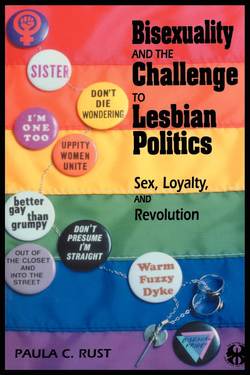Читать книгу Bisexuality and the Challenge to Lesbian Politics - Paula C Rust - Страница 35
На сайте Литреса книга снята с продажи.
Bisexuality as a Matter of Gender Blindness
ОглавлениеThe foregoing discussion demonstrates one point very clearly. Lesbians define bisexuality in a variety of different ways. Despite this great variety, however, all of the definitions examined so far have one thing in common. They all describe bisexuality in terms of the gender(s) of one’s sexual partner(s) or potential partner(s). Defined by behavior, bisexuals are people who engage in sex with both women and men. Defined by feelings, bisexuals are people who are attracted to or capable of loving both women and men. Defined by preferences, bisexuals are either people who have preferences for both women and men or people who lack a preference for one over the other. These definitions of bisexuality retain the emphasis on the gender(s) of one’s partner(s), an emphasis derived from the gender-specific definitions of homosexuality and heterosexuality.
A very small number of lesbian respondents—fewer than one in twenty—have a very different type of definition of bisexuality. Rather than conceptualizing bisexuality as a combination of homosexuality and heterosexuality, thus emphasizing gender, these women choose to deemphasize gender by conceptualizing bisexuality as the ability to love people regardless of their gender. Bisexuals are, by this definition, people who love people rather than people who love women and men. For example, Prudence defines bisexuals as “people who love people regardless of sex.”
These women harbor some of the same reservations about bisexuality that other lesbians do:
I don’t understand it because I can’t relate to men the way I do to women (any more than I can understand heterosexuality). It’s possible that it is the ideal—relating to people regardless of gender, but I tend to think (perhaps wrongly) of the bisexual as sexually oriented instead of emotionally oriented. (Willa)
Most, however, believe that bisexuality is the most natural or ideal form of sexuality, arguing that it reflects an openness toward people and experiences or a more humanist way of relating to people. This ideal is achieved by a few healthy and untraumatized people in this world and could be achieved by all people in a less sexist, more humane world. In effect, bisexuality is the sexual equivalent of equal opportunity; as Esther put it, “One way to look at it is they give all people equal footing.” Once gender discrimination is eradicated, perhaps we will all be able to look past each others’ genitals and genders to the human beings inside.
